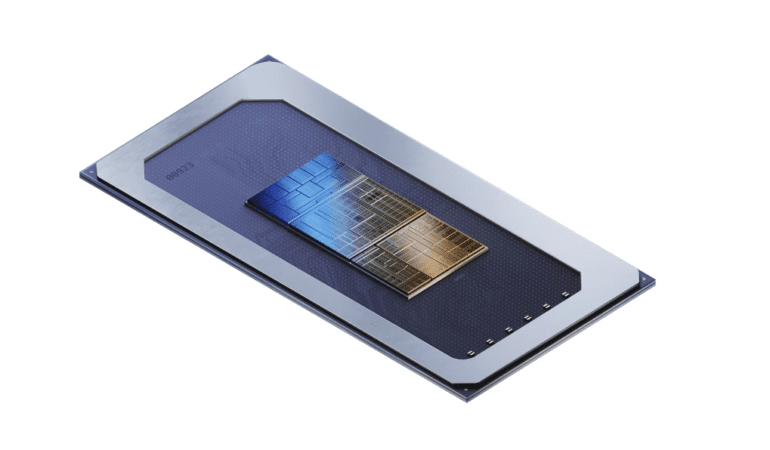TL;DR:
- Intel unveils Meteor Lake, a groundbreaking platform with a focus on client-side AI performance.
- Meteor Lake adopts a chiplet design, leveraging Intel’s 4th generation process and Foveros packaging technology.
- The CPU maintains a hybrid architecture for power efficiency, while a new integrated GPU brings Arc graphics with support for ray tracing and XeSS.
- The vision processing unit (VPU) is the centerpiece, enabling efficient handling of specific AI workloads locally.
- Intel aims to reduce reliance on cloud-based solutions, improving cost-efficiency and addressing privacy concerns.
- Developers can leverage Intel’s partnerships and tools to incorporate AI capabilities into existing applications.
Main AI News:
Intel, the renowned tech giant, has recently provided a sneak peek into its highly anticipated Meteor Lake platform, set to make its grand entrance later this year. With a strong emphasis on client-side AI performance, Intel aims to revolutionize the computing landscape by enabling powerful AI experiences directly on user devices, eliminating the need to rely solely on cloud-based solutions for emerging workloads and use cases.
At the heart of the Meteor Lake platform lies a cutting-edge chiplet design, marking the next evolutionary leap in Intel’s CPU lineup. This groundbreaking architecture is built upon Intel’s 4th generation process and leverages the innovative Foveros packaging technology, enabling a chiplet-style layout. By compartmentalizing different components of the processor into separate tiles or chiplets, Intel empowers advanced power management while catering to specific workloads with unmatched precision.
The central piece of this chiplet mosaic is none other than the CPU itself, meticulously developed with an unwavering commitment to power efficiency. Retaining the hybrid architecture observed in its 12th-gen and 13th-gen processors, Intel delivers a harmonious blend of performance and energy optimization. Notably, Meteor Lake introduces Intel’s eagerly awaited Arc graphics, an integrated architecture that encompasses support for cutting-edge features such as ray tracing and XeSS. This impressive integration brings an era of visually stunning and power-efficient graphics to the table.
Nevertheless, the true spotlight rests on Intel’s groundbreaking AI engine, the Vision Processing Unit (VPU), ingeniously embedded within the processor. This ingenious addition signifies Intel’s ambitious pursuit of propelling client-side AI workloads to unprecedented heights, remarkably diminishing the computational demands of AI inferencing.
The ubiquity of AI has become increasingly evident, permeating various aspects of our lives, from conversational AI models like ChatGPT, fueled by expansive language models, to mesmerizing image generation tools like Midjourney and Stable Diffusion. Traditionally, these workloads have been processed in the cloud, leading to escalated costs for software vendors as these tools grow in sophistication and computational requirements. Additionally, privacy concerns surrounding cloud-based solutions have garnered substantial attention. With AI seamlessly integrated into Windows Copilot and an array of applications, Intel remains steadfast in its commitment to seize this transformative opportunity.
Enter the Meteor Lake VPU, tailor-made to handle specific AI workloads with unparalleled efficiency, surpassing the capabilities of general-purpose CPUs or even GPUs. This dedicated processor empowers AI-intensive tasks to be executed locally on personal computers, enhancing accessibility and expediting processing times. Designed for sustained AI workloads such as applying background blur effects, the VPU synergizes seamlessly with the GPU, which excels in AI-infused rendering pipelines, while the CPU efficiently handles lightweight single-inference tasks. These components can be harnessed simultaneously, capitalizing on the unique strengths of each to maximize performance.
Intel showcased the capabilities of the Meteor Lake platform by executing a Stable Diffusion image generation task in GIMP. By leveraging the collective power of the CPU, GPU, and VPU, the computer swiftly generated a complex image based on a text description, completing the task in a mere 20 seconds. Furthermore, Intel demonstrated the exclusive prowess of the VPU by running a Super Resolution tool, elevating the image resolution within seconds. The VPU’s remarkable efficiency and performance not only amplify the quality of effects like background blur, with enhanced edge detection, but also consume minimal power.
For developers, Intel is dedicated to enhancing existing applications with AI capabilities, leveraging popular platforms and tools like ONNX, OpenVINO, and Windows DirectML. Esteemed applications, including GIMP, Blender, Audacity, OBS, and Adobe apps will benefit from these integrations. Intel plays to its strengths, leveraging its robust ecosystem of thousands of x86 apps and platforms that have flourished around its processors. This inherent advantage positions Intel ahead of competitors like Qualcomm, who face challenges regarding app compatibility on Windows.
Conclusion:
Intel’s unveiling of the Meteor Lake platform signifies a major leap forward in client-side AI performance. By integrating a chiplet design, optimized CPU architecture, advanced GPU capabilities, and a dedicated VPU, Intel is addressing the increasing demand for efficient and localized AI processing. This move reduces costs for software vendors, enhances privacy, and propels the industry toward a future where AI workloads can be seamlessly executed on personal devices. Intel’s commitment to collaborating with developers and leveraging its existing ecosystem further solidifies its position in the market, providing a competitive edge over rivals and driving the adoption of AI technologies across various sectors.

